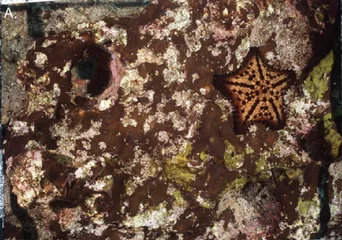Recent research by Dr. Jon Witman, Brown University, and co-funded by Galapagos Conservancy has shown that cyanobacteria rapidly expand in the rocky subtidal regions of central Galapagos. Cyanobacteria is a photosynthetic, aquatic bacteria that forms mats on the surfaces of submerged habitats.
Experts believe that cyanobacteria could be an indicator of reef ecosystem stress. This is due to the fact that they are able to adapt to changes such as temperature, nutrient depletion and coral death. This plasticity allows cyanobacteria to thrive in warming marine ecosystems.
This study showed that cyanobacterial mats have rapidly expanded at a subtidal location in central Galapagos Islands. They now cover one-third the rocky reef.
To determine what factors led to the observed changes, both field and lab experiments were used. The abundance of cyanobacteria was reduced by sea cucumbers (Holothurians), which they feed on. This effect is likely to be present in both hard-substrate as well as soft-substrate habitats. The Galapagos Islands have seen a severe increase in sea cucumber populations since 2004. This suggests that benthic and cyanobacteria may have been partly influenced by the recent growth of sea cucumber populations in the Galapagos Islands.
Two species of sea stars were able to avoid Cyanobacteria, which was unpalatable for several herbivorous fish species.
A lab experiment confirmed that cyanobacteria mat expansion was facilitated by El Nino water temperatures between 2014 and 2017.
Warming water temperatures and healthy populations of marine herbivores have facilitated the growth of cyanobacterial mats along subtidal coral reefs in Galapagos Islands. However, this has had a significant impact on the structure of bottom-dwelling communities and the persistence of Galapagos coral reefs.



